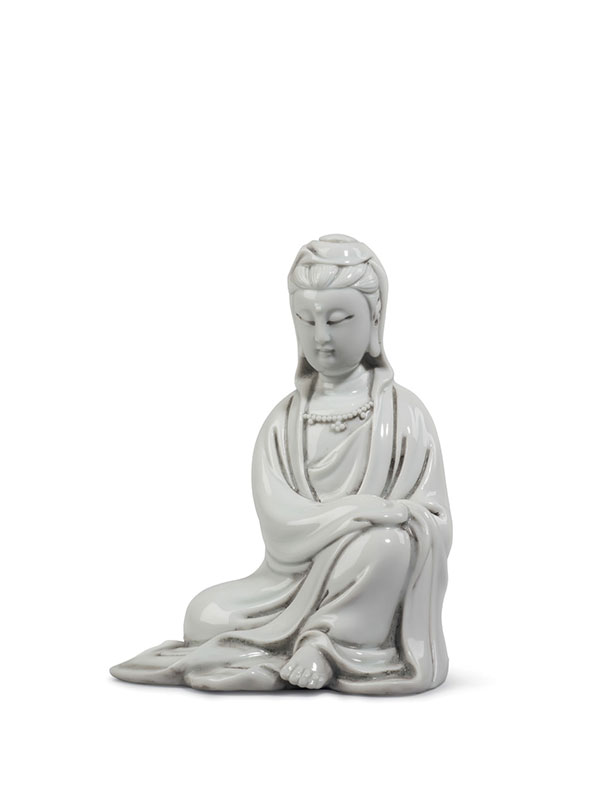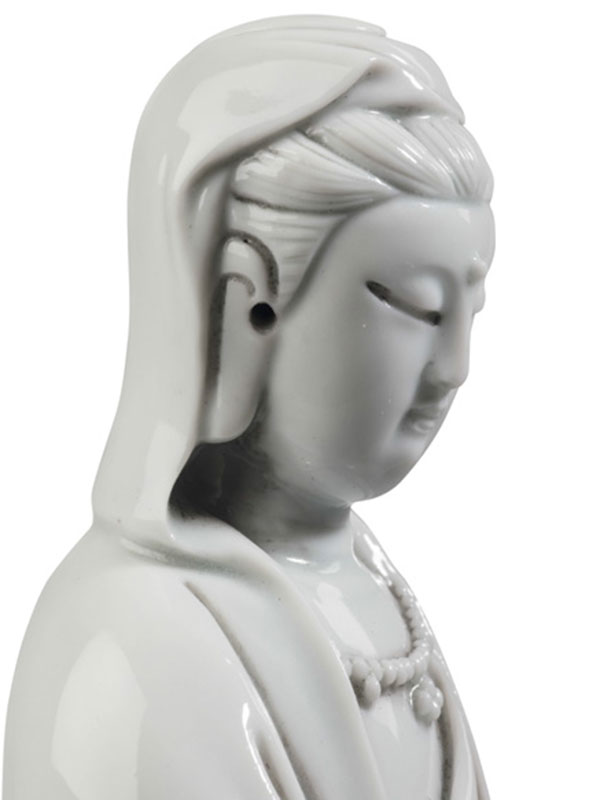Dehua figure of seated Guanyin
A small blanc-de-chine porcelain figure of Guanyin, seated in the ‘royal ease’ position. Her body is dressed in loosely fitting robes that fall open at the chest, revealing a beaded necklace and leaving only her left foot uncovered. Both of her hands, hidden in the folds of her dress, rest on her drawn-up left knee. Her neatly arranged hair is covered by a cowl. Her finely carved face has a demure, benign expression with downcast eyes, firmly closed lips, elongated ears and an urna placed in the middle of the forehead. The exterior is fully covered by a white glaze with a bluish hue, leaving only the base rim and the interior uncovered, revealing the fine white porcelain body.
Guanyin is the bodhisattva associated with compassion as venerated by East Asian Buddhists, usually as a female. It is generally accepted among East Asian adherents that Guanyin originated as the Sanskrit Avalokitesvara, which is her male form. As the most popular deity in the Buddhist pantheon, she became one of the favorite figures during the Ming and Qing dynasties and is often depicted in so-called blanc-de-chine porcelain made at the Dehua kilns in Fujian province. Blanc-de-chine figures of such size and good detail are rare. A slightly larger Guanyin closely comparable with her seated posture of ‘royal ease’ (rajalalitasana) and with both her hands folded within the sleeves, is dated to the late 19th century or later and is in the collection of the Asian Civilisations Museum in Singapore.[1] Another comparable seated Guanyin with her hands in lalitasana mudra, dated to the 18th century, was in the Akroyd collection and illustrated in P. J. Donnelly’s book Blanc de Chine.[2]
- Kerr, R. and Ayers, J. Blanc de Chine: Porcelain from Dehua, Art Media Resources Ltd., Chicago, 2002, no. 2
- Donnelly, P.J. Blanc de Chine, Faber and Faber, London, 1969, pl. 84


